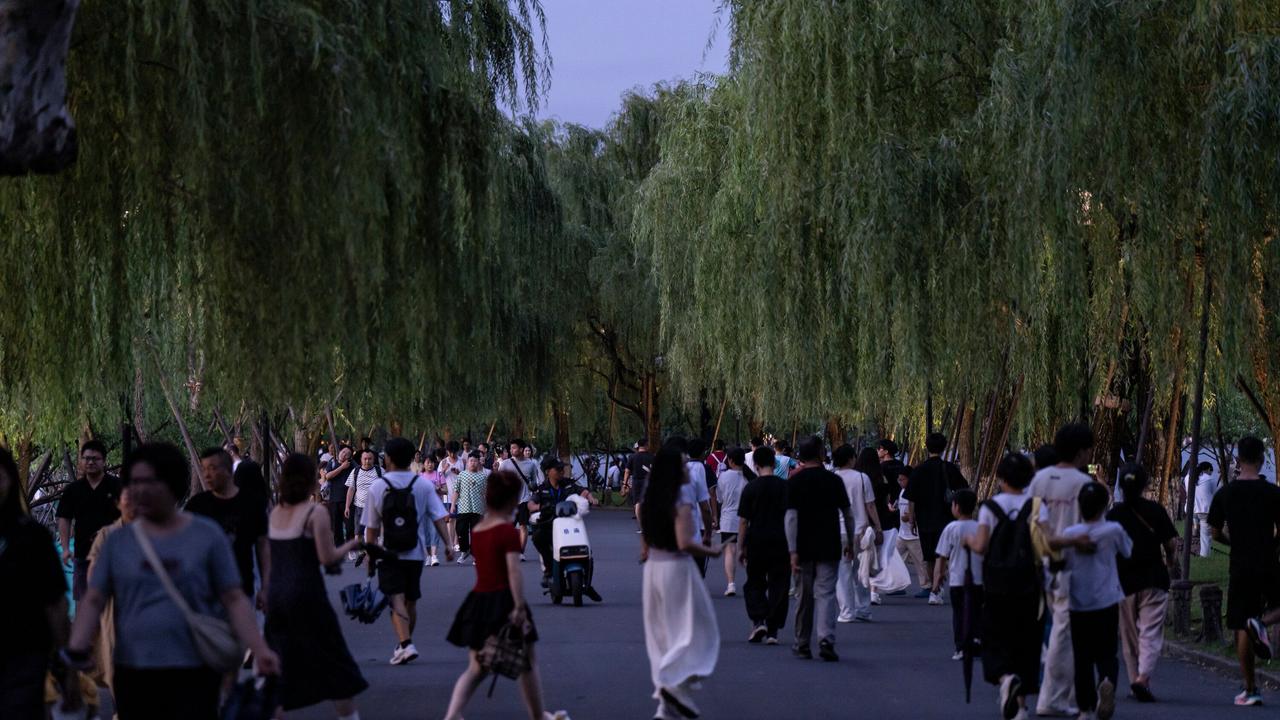East Asia Challenges Silicon Valley with Old-School Innovation Tactics
2 Sources
2 Sources
[1]
East Asia is challenging Silicon Valley - by being like Silicon Valley used to be
Silicon Valley has been a universal symbol of innovation for decades. Because of its reputation, governments around the world have tried to foster their own versions by investing heavily in tech hubs. These efforts, which include Silicon Beach in Los Angeles, Silicon Island in Malaysia and Silicon Roundabout in the UK, have not always worked. But some places, particularly parts of east Asia, have seen their own Silicon Valleys flourish. China has the world's second-largest venture capital market, scores of startups, and cutting-edge tech to challenge Silicon Valley. Japan and Korea have also become some of the most active corporate venture capital investors in the world. At the same time, these challenger ecosystems possess some of the attributes of Silicon Valley in its heyday. More, in some ways, than Silicon Valley itself does these days. The scale of Silicon Valley remains unparalleled, at least for now. In 2024, the region's market capitalisation (the value of companies' publicly traded shares) had reached US$14.3 trillion (£11 trillion). This is comparable to the entire GDP of China, the world's second-largest economy. But Silicon Valley is no longer a counter-cultural world of startups in garages, where small, disruptive organisations build world-changing products on a shoestring. It has morphed into a land of Goliaths, not Davids. Cups of instant noodles have, for many, been replaced by açaí bowls, and office all-nighters with wellbeing workshops and digital detox retreats. Stalwart investors, such as Sequoia's Mike Moritz, have complained that Silicon Valley tech workers have become "lazy and entitled". Meanwhile, the work ethic and laser focus of tech workers elsewhere has advanced. About ten years ago, Chinese tech's working hours were described as "996" - working from 9am to 9pm six days a week. They are now referred to as "007", a schedule where employees work from midnight to midnight, seven days a week. 'Good artists copy, great artists steal' The history of Silicon Valley is one of hungry challengers disrobing the big, boring incumbents. Apple raised equity investment from Xerox, then a leading print production corporation, and used the access to Xerox's Palo Alto Research Center to take inspiration from the company's plans for a computer that had a graphical user interface. Apple later refined the software for the Macintosh, giving it its edge. In 1996, Jobs famously said: "Picasso had a saying - 'Good artists copy; great artists steal' - and we have always been shameless about stealing great ideas." Today, the Goliaths leading Silicon Valley have huge intellectual property portfolios to defend. And they are outraged when their tech is taken. OpenAI, the American company that made ChatGPT, has even asked the US government to declare Chinese AI firm DeepSeek "state controlled" and to outlaw its use in the US. Huawei and Bytedance's TikTok have faced similar calls in the past. In western media, much of the focus on the moment DeepSeek disrupted the AI landscape has been about how it rattled Silicon Valley. But there has been less coverage on how it has instigated instant rivals within China. Days after Deepseek's release, Chinese tech company Alibaba announced that its AI model was superior. And China recently launched Manus, a fully autonomous AI agent that fully replaces rather than assists humans. China's answer to Silicon Valley is what Taiwanese businessman, Kai-fu Lee, calls "gladiatorial entrepreneurship". This is where founders constantly innovate because as soon as their product is released, they know it will be copied and reverse engineered. The system as a whole benefits from the intense competition, the way Silicon Valley did in its ascent. The students have become the teacher Silicon Valley used to be known for its counter culture and its outsized vision of how tech can transform the globe. This is epitomised by Masayoshi Son, a former student of Silicon Valley from east Asia who is the founder and CEO of Japanese firm SoftBank. He first came to Silicon Valley in the early 1980s and quickly integrated into the Silicon Valley way of business. Son launched his own startup when he returned to Japan, modelled on what he experienced in the few years he lived in California. With this, Softbank was born as a software distributor. SoftBank's Vision Fund is now the largest venture capital fund in the world, with over US$100 billion (£77.5 billion) in capital. Son's giant fund and impatient style of investing have contributed to change in Silicon Valley. Ballooning valuations and the use of exploding term sheets (investment offers that expire within a matter of days) are increasingly the norm. Son is stylised as a classic outsider. Gambling Man, a recently published book from the former editor of the Financial Times, Lionel Barber, details how Son is not "really Japanese" (he's ethnically Korean) and has long touted this challenger narrative. Now as one of the biggest investors in Silicon Valley, he is pushy, confrontational and has a huge vision for how technologies such as AI can change the world. He is the purveyor of that grand vision and an advocate for the risk-taking that is synonymous with "classic" Silicon Valley. Meanwhile, China's AI gladiators innovate constantly in their bid to overtake the once hungry American behemoths who are now forced to call on the state to help shore-up their position. The contrasting trajectories raise questions about who should now become more like whom if they are to win the global technology race.
[2]
East Asia is challenging Silicon Valley by being like Silicon Valley used to be
Silicon Valley has been a universal symbol of innovation for decades. Because of its reputation, governments around the world have tried to foster their own versions by investing heavily in tech hubs. These efforts, which include Silicon Beach in Los Angeles, Silicon Island in Malaysia and Silicon Roundabout in the UK, have not always worked. But some places, particularly parts of East Asia, have seen their own Silicon Valleys flourish. China has the world's second-largest venture capital market, scores of startups, and cutting-edge tech to challenge Silicon Valley. Japan and Korea have also become some of the most active corporate venture capital investors in the world. At the same time, these challenger ecosystems possess some of the attributes of Silicon Valley in its heyday. More, in some ways, than Silicon Valley itself does these days. The scale of Silicon Valley remains unparalleled, at least for now. In 2024, the region's market capitalization (the value of companies' publicly traded shares) had reached US$14.3 trillion (£11 trillion). This is comparable to the entire GDP of China, the world's second-largest economy. But Silicon Valley is no longer a counter-cultural world of startups in garages, where small, disruptive organizations build world-changing products on a shoestring. It has morphed into a land of Goliaths, not Davids. Cups of instant noodles have, for many, been replaced by açaí bowls, and office all-nighters with well-being workshops and digital detox retreats. Stalwart investors, such as Sequoia's Mike Moritz, have complained that Silicon Valley tech workers have become "lazy and entitled". Meanwhile, the work ethic and laser focus of tech workers elsewhere has advanced. About ten years ago, Chinese tech's working hours were described as "996" -- working from 9am to 9pm six days a week. They are now referred to as "007," a schedule where employees work from midnight to midnight, seven days a week. 'Good artists copy, great artists steal' The history of Silicon Valley is one of hungry challengers disrobing the big, boring incumbents. Apple raised equity investment from Xerox, then a leading print production corporation, and used the access to Xerox's Palo Alto Research Center to take inspiration from the company's plans for a computer that had a graphical user interface. Apple later refined the software for the Macintosh, giving it its edge. In 1996, Jobs famously said: "Picasso had a saying -- "Good artists copy; great artists steal' -- and we have always been shameless about stealing great ideas." Today, the Goliaths leading Silicon Valley have huge intellectual property portfolios to defend. And they are outraged when their tech is taken. OpenAI, the American company that made ChatGPT, has even asked the US government to declare Chinese AI firm DeepSeek "state controlled" and to outlaw its use in the US. Huawei and Bytedance's TikTok have faced similar calls in the past. In western media, much of the focus on the moment DeepSeek disrupted the AI landscape has been about how it rattled Silicon Valley. But there has been less coverage on how it has instigated instant rivals within China. Days after Deepseek's release, Chinese tech company Alibaba announced that its AI model was superior. And China recently launched Manus, a fully autonomous AI agent that fully replaces rather than assists humans. China's answer to Silicon Valley is what Taiwanese businessman, Kai-fu Lee, calls "gladiatorial entrepreneurship". This is where founders constantly innovate because as soon as their product is released, they know it will be copied and reverse engineered. The system as a whole benefits from the intense competition, the way Silicon Valley did in its ascent. The students have become the teacher Silicon Valley used to be known for its counter culture and its outsized vision of how tech can transform the globe. This is epitomized by Masayoshi Son, a former student of Silicon Valley from East Asia who is the founder and CEO of Japanese firm SoftBank. He first came to Silicon Valley in the early 1980s and quickly integrated into the Silicon Valley way of business. Son launched his own startup when he returned to Japan, modeled on what he experienced in the few years he lived in California. With this, Softbank was born as a software distributor. SoftBank's Vision Fund is now the largest venture capital fund in the world, with over US$100 billion (£77.5 billion) in capital. Son's giant fund and impatient style of investing have contributed to change in Silicon Valley. Ballooning valuations and the use of exploding term sheets (investment offers that expire within a matter of days) are increasingly the norm. Son is stylized as a classic outsider. Gambling Man, a recently published book from the former editor of the Financial Times, Lionel Barber, details how Son is not "really Japanese" (he's ethnically Korean) and has long touted this challenger narrative. Now as one of the biggest investors in Silicon Valley, he is pushy, confrontational and has a huge vision for how technologies such as AI can change the world. He is the purveyor of that grand vision and an advocate for the risk-taking that is synonymous with "classic" Silicon Valley. Meanwhile, China's AI gladiators innovate constantly in their bid to overtake the once hungry American behemoths who are now forced to call on the state to help shore-up their position. The contrasting trajectories raise questions about who should now become more like whom if they are to win the global technology race.
Share
Share
Copy Link
East Asian tech hubs are adopting the aggressive innovation strategies that once defined Silicon Valley, while the latter has become more corporate and defensive.

The Rise of East Asian Tech Hubs
East Asia is emerging as a formidable challenger to Silicon Valley's long-standing dominance in the tech industry. Countries like China, Japan, and Korea are not just replicating the success of the American tech hub but are embodying the spirit that once defined Silicon Valley's early days
1
.China, in particular, has become a powerhouse in the tech world, boasting the second-largest venture capital market globally and a plethora of startups working on cutting-edge technologies. Japan and Korea have also made significant strides, becoming some of the most active corporate venture capital investors worldwide
2
.The Transformation of Silicon Valley
While Silicon Valley's scale remains unparalleled, with a market capitalization of $14.3 trillion in 2024, its character has undergone a significant transformation. The once counter-cultural hub of garage startups and disruptive innovations has evolved into a landscape dominated by tech giants
1
.This shift is evident in the changing work culture, where:
- All-nighters fueled by instant noodles have been replaced by wellness workshops and digital detox retreats
- Prominent investors like Sequoia's Mike Moritz have criticized Silicon Valley tech workers as becoming "lazy and entitled"
2
The Rise of "Gladiatorial Entrepreneurship" in China
In stark contrast to Silicon Valley's evolving work culture, China's tech sector has intensified its work ethic. The notorious "996" work schedule (9 am to 9 pm, six days a week) has reportedly evolved into "007" - working from midnight to midnight, seven days a week
1
.Kai-fu Lee, a Taiwanese businessman, describes China's approach as "gladiatorial entrepreneurship." This environment fosters constant innovation, as founders know their products will be quickly copied and reverse-engineered upon release
2
.The Battle for AI Dominance
The competition between East Asia and Silicon Valley is particularly fierce in the realm of artificial intelligence:
- OpenAI, the creator of ChatGPT, has sought U.S. government intervention to declare Chinese AI firm DeepSeek as "state-controlled"
1
- Following DeepSeek's disruptive entry into the AI market, Alibaba quickly announced a superior AI model
- China launched Manus, a fully autonomous AI agent designed to replace rather than assist humans
2
Related Stories
The Role of SoftBank and Masayoshi Son
Masayoshi Son, founder and CEO of Japanese firm SoftBank, exemplifies the transformation of East Asian tech leaders. Once a student of Silicon Valley, Son has become one of its biggest investors through SoftBank's Vision Fund, the world's largest venture capital fund with over $100 billion in capital
1
.Son's aggressive investment style, characterized by:
- Ballooning valuations
- Use of "exploding term sheets" (investment offers with short expiration periods)
has significantly influenced Silicon Valley's investment landscape
2
.The Shifting Balance of Power
As East Asian tech hubs adopt the aggressive innovation strategies that once defined Silicon Valley, questions arise about the future of global tech leadership. While Silicon Valley giants now rely on government intervention to protect their interests, China's "AI gladiators" continue to innovate rapidly
1
.This contrast in trajectories raises a crucial question: In the race for global technology dominance, who should emulate whom?
References
Summarized by
Navi
[1]
Related Stories
Recent Highlights
1
AI Chatbots Sway Voters More Effectively Than Traditional Political Ads, New Studies Reveal
Science and Research

2
Google AI glasses set to launch in 2026 with Gemini and Android XR across multiple partners
Technology

3
EU Launches Antitrust Probe Into Google's AI Training Practices and Content Usage
Policy and Regulation







